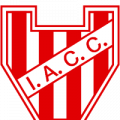Renault have announced that it will give Robert Kubica another Formula 1 test in its 2012 spec E20 chassis, describing it as a chance to "evaluate his driving capabilities."
32-year-old Kubica returned to an F1 cockpit for the first time since his horror rally crash in February 2011 last month in a private test at the Valencia circuit, where the Renault team put him through his paces with 115 laps total, including short and long stints and race starts.
He has since driven the same car up the hill at the Goodwood Festival of Speed, and team boss Cyril Abiteboul declared his third outing the car to be a opportunity to analyse "his capabilties to return to the highest level of competition."
Kubica's first test in the car was described by Abiteboul as "no more than to let Robert get reacqainted with the feel of driving again", with the latest test set to be the bar to see if it is feasible for 2008 Canadian Grand Prix winner to return full-time to F1.
"There are still many hurdles for him to overcome, and he knows better than anyone else that only his performance will determine if he can one day return to being a professional driver" concluded Abiteboul.
Special Adaptations
In the rally accident that he suffered, Kubica's right forearm was partially amputated, and just saved by doctors. He therefore has limited movement in the arm.
As a result, Renault made changes to the steering wheel, so that the gear-shift paddles were both on the left hand side, giving Kubica slightly more room to move in the tight confines of an F1 cockpit.
Saying that, he has driven a Formula E and GP3 car, which both have tight cockpits, with seemingly no problems.
Is it feasible for him to return?
Valencia is a tricky circuit. It is tight and twisty, and Kubica was faster than Renault official reserve Sergey Sirotkin.
If he is comfortable in the cockpit, and fast enough to warrant a race seat, there can be no reason why he can not make the most incredible comeback to F1.
He does not have a superlicence, which you need to compete in F1, but the FIA may make an exception, seeing as he has driven rally cars, and tested the various single seaters.
If the Paul Ricard test goes well, Renault will surely want to give Kubica a run in 2017 machinery before making a final decision about whether to replace the underfire Jolyon Palmer.
The post Hungarian GP test in August is the perfect opportunity to do this, and if that goes well, Kubica could be given a first practice drive in Italy, and at other tracks.
Renault would not be giving Kubica a second test, if he was not under serious consideration for a 2018 race seat. And as Fernando Alonso described him as one of the best, that can only be a good thing for Formula 1.








































